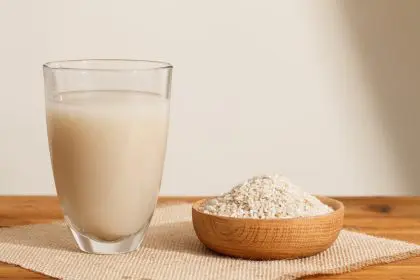The personal care industry has witnessed a dramatic transformation as consumers increasingly abandon traditional antiperspirants in favor of natural alternatives. This migration reflects growing concerns about conventional deodorant ingredients, particularly aluminum compounds that have faced scrutiny over potential health implications, despite inconclusive scientific evidence linking them to serious conditions.
The movement toward natural deodorants represents more than a fleeting trend. It signals a fundamental shift in consumer priorities, with millions of Americans now prioritizing ingredient transparency and environmental responsibility over conventional product performance. Market research indicates that natural deodorant sales have increased by more than 30 percent annually over the past three years, establishing this category as one of the fastest-growing segments in personal care.
The science behind natural odor protection
Unlike traditional antiperspirants that rely on aluminum salts to block sweat ducts, natural deodorants employ an entirely different approach to odor management. These products focus on neutralizing odor-causing bacteria rather than preventing perspiration altogether. This fundamental difference requires consumers to recalibrate their expectations and understand that sweating is a natural bodily function that serves important regulatory purposes.
The transition period often proves challenging for newcomers to natural deodorants. Medical professionals report that the body typically requires two to four weeks to adjust to the new formulation, during which time users may experience increased odor or moisture. This adjustment phase occurs because the body’s bacterial ecosystem needs time to rebalance after years of aluminum exposure.
Natural deodorant formulations typically incorporate multiple active ingredients working synergistically to combat odor. Baking soda serves as the primary odor neutralizer in many products, though its alkaline nature can irritate sensitive skin. Alternative formulations utilize magnesium hydroxide or zinc oxide for gentler yet effective odor control.
Top-performing natural alternatives
The natural deodorant landscape offers numerous options, each with distinct advantages and characteristics. Native has emerged as a category leader, with its eucalyptus and mint formulation delivering consistent eight-hour protection without requiring midday reapplication. The brand’s success stems from its balanced approach to scent intensity and moisture management.
Salt + Stone has garnered attention for its sophisticated fragrance profile and reliable performance during physical activity. The product’s appeal lies in its ability to maintain effectiveness even during intense workouts, addressing a common concern among natural deodorant skeptics.
Corpus represents the premium segment of natural deodorants, incorporating high-quality essential oils and botanical extracts. Its smooth application and sophisticated scent profile appeal to consumers seeking luxury in their natural personal care routine. The eight-hour protection window makes it suitable for professional environments where reapplication may be impractical.
Curie targets consumers transitioning from traditional antiperspirants by formulating products that closely mimic conventional performance. The combination of baking soda and arrowroot powder creates effective moisture absorption while maintaining pH balance.
Drunk Elephant takes an innovative approach by incorporating mandelic acid and marula oil, focusing on skin health alongside odor protection. This formulation appeals to consumers who view deodorant as part of their broader skincare routine.
Ingredient considerations and selection criteria
Choosing an appropriate natural deodorant requires understanding key ingredient categories and their functions. Active odor-fighting components include baking soda, magnesium hydroxide, and zinc oxide, each offering different benefits and potential drawbacks. Baking soda provides powerful odor neutralization but may cause irritation for sensitive skin types.
Moisture-absorbing ingredients play crucial roles in natural deodorant effectiveness. Arrowroot powder and tapioca starch excel at managing wetness without clogging pores or creating uncomfortable residue. These plant-based powders offer superior absorption compared to synthetic alternatives while maintaining product stability.
Probiotics represent an emerging category in natural deodorants, working to balance the skin’s microbiome and reduce odor-causing bacterial populations. While research on topical probiotic applications remains limited, early results suggest potential benefits for long-term odor management.
Essential oils serve dual purposes in natural deodorants, providing fragrance while offering antimicrobial properties. Tea tree oil, lavender, and eucalyptus demonstrate natural antibacterial effects, though individuals with sensitive skin should perform patch tests before regular use.
Performance expectations and practical considerations
Natural deodorants require realistic performance expectations compared to traditional antiperspirants. Most quality natural options provide four to eight hours of effective odor protection under normal conditions, though individual results vary based on body chemistry, activity level, and environmental factors.
Reapplication frequency depends on personal factors and product formulation. Some users find once-daily application sufficient, while others may need midday touch-ups during particularly active or stressful periods. Understanding personal needs helps in selecting appropriate products and managing expectations.
The texture and application experience differ significantly among natural deodorant brands. Some formulations may feel grainy due to baking soda content, while others offer smoother application through careful ingredient balancing. Temperature sensitivity affects many natural deodorants, with products potentially softening in warm conditions or hardening in cold environments.
Making the transition successfully
Successfully switching to natural deodorants requires patience and strategic planning. Beginning the transition during cooler months or less active periods can ease the adjustment process. Maintaining realistic expectations during the initial weeks prevents premature product abandonment.
The natural deodorant market continues expanding as consumer demand drives innovation and improved formulations. As environmental consciousness grows and ingredient transparency becomes increasingly important, natural deodorants are positioned to capture even larger market share in the personal care industry.















